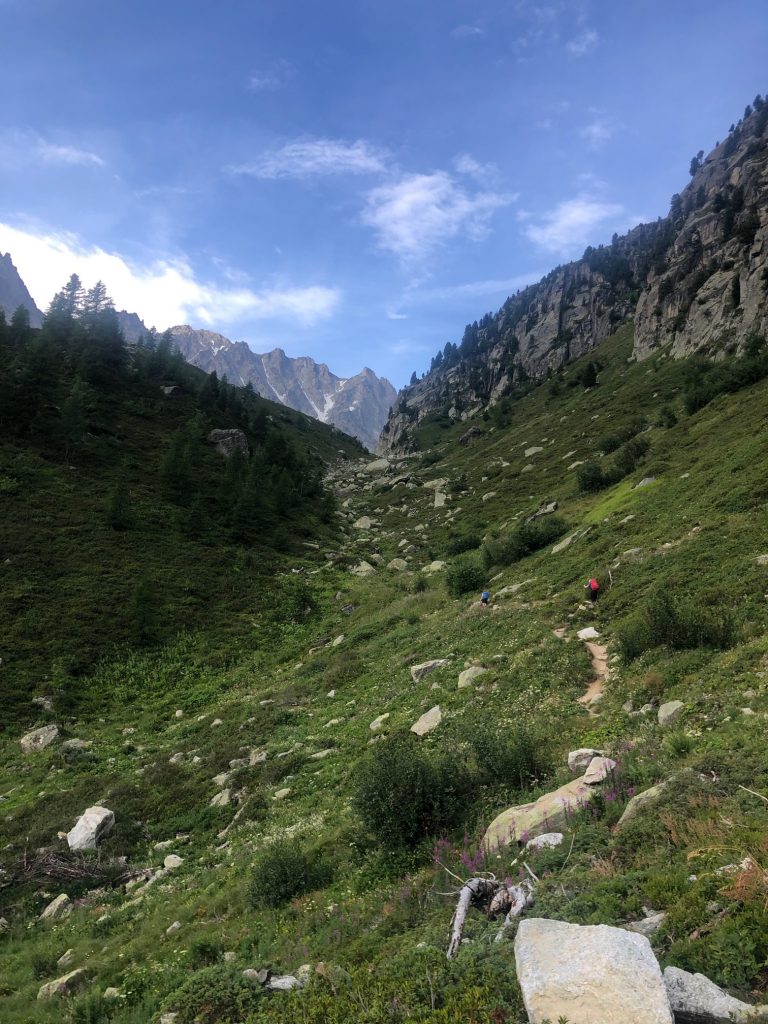
Active travelers seeking adventure and a challenge often consider hiking the Tour du Mont Blanc as a way to experience the vast beauty of the French, Italian and Swiss Alps, while enjoying the culture of the various mountain towns along the way. Mont Blanc is the tallest peak in Western Europe at 15,771 feet, and is covered by 40 square miles of glaciers, giving it its name (White Mountain). With its suspension bridges, rock scrambles,
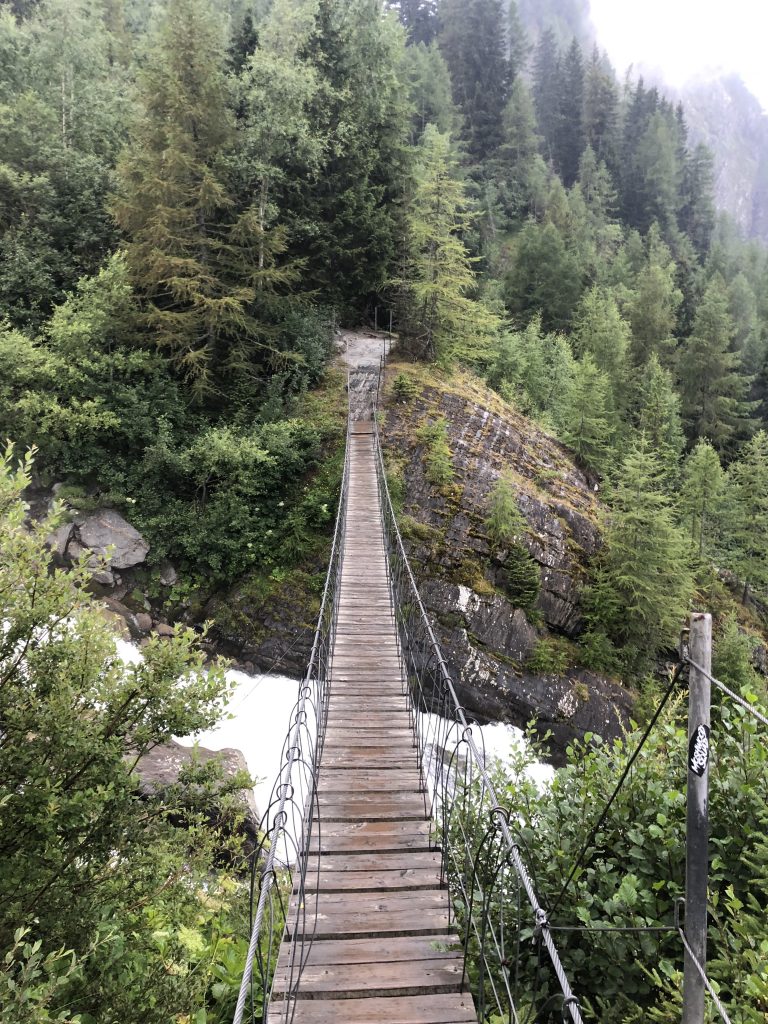
beautiful wildflowers, mountain streams, Roman roads, and cows with chiming bells around their necks everywhere along the journey, the tour is a hiker’s dream. The full Tour Du Mont Blanc is 110 miles, but there are alternatives that allow travelers with less time to see the “best of” the tour, 60 miles, in 7 days.
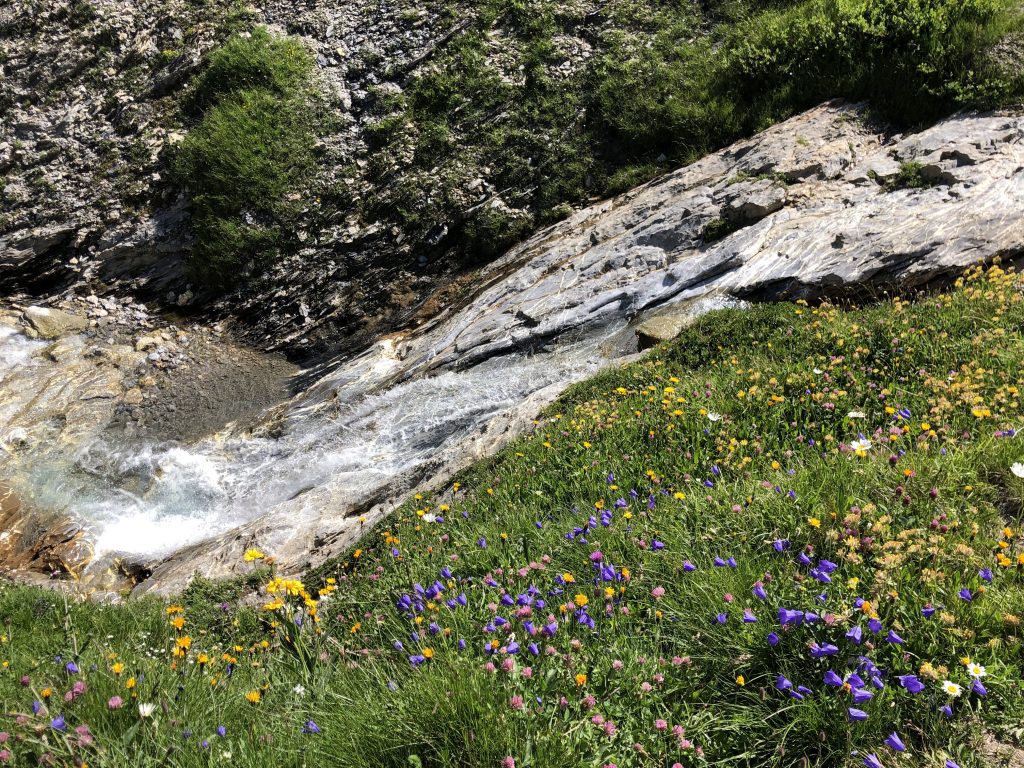
Recently, my husband and I joined friends to embark upon the “Best of Tour du Mont Blanc” and the experience was incredible. There are many different options when hiking the tour, ranging from carrying all your gear and camping along the way, to hiking with a day pack and having your luggage meet you at hotels. Our group chose the latter and used a tour company called Mont Blanc Treks to schedule our lodging (which included breakfast and dinner) and a service to move our bags. We opted to do the self-guided tour, in which the company provides maps, gear lists, and a couple pages of detailed instructions to help us navigate the hike. Coming from San Diego, we were fortunate to have access to numerous training hikes that preparing us for our journey, but the most challenging part was hiking 8-11 miles per day with elevation changes +/- 5,000 feet.
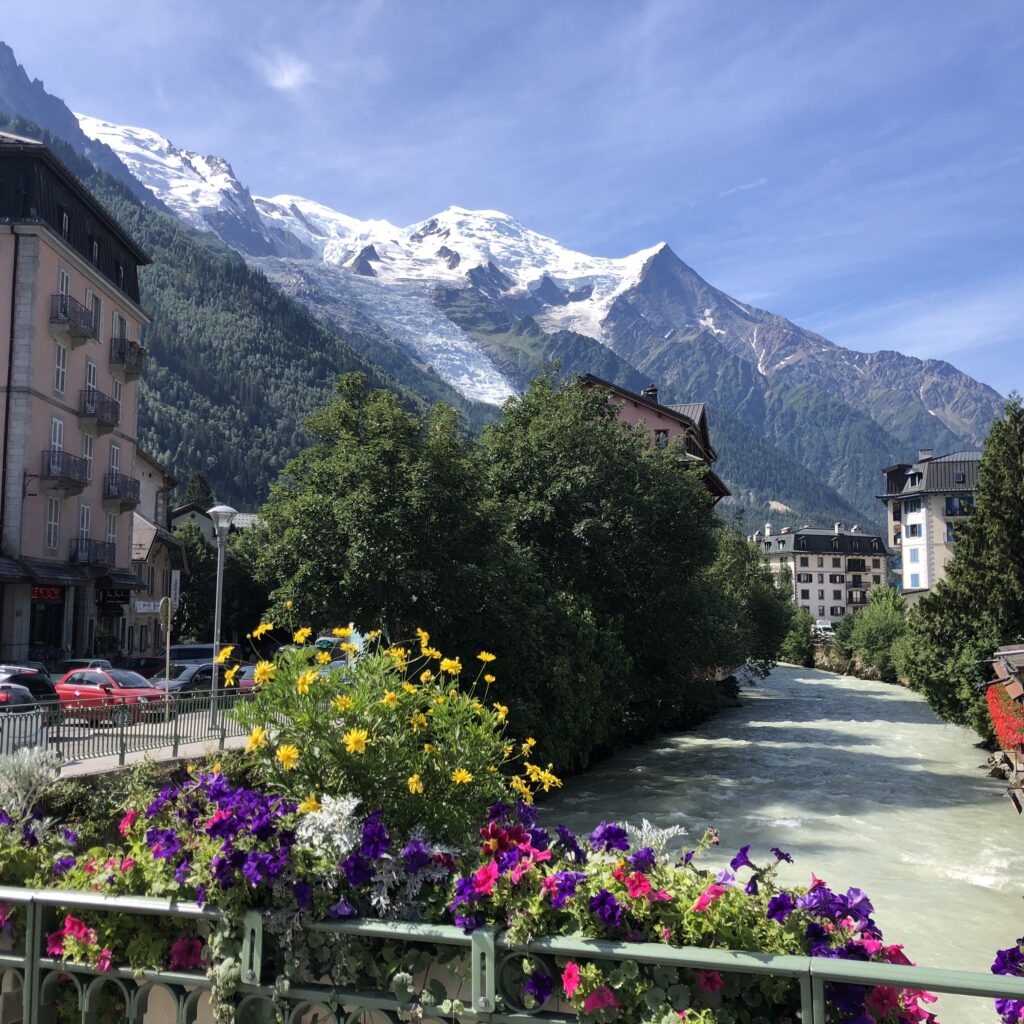
The Tour du Mont Blanc is a loop that can be started anywhere along the trail, however for those traveling from afar, the traditional starting point is Chamonix, France, a village located about an hour from Geneva International Airport. Chamonix is an adventure town known for skiing, snowboarding and glacier trekking in the winter and parasailing, rafting and hiking in the summer. After spending one night in Chamonix to acclimate to the time change we made our way to Les Houches, France which would act as our starting point for the “best of tour.” Our lodging consisted of 3 star hotels and one refuge along the route and we started off in the Hotel Du Bois, a small hotel with a nice pool and bar and delicious food. We relaxed and enjoyed walking to the local Patisserie to get fresh baguette sandwiches before relaxing in the pool and then enjoying our three course dinner that was part of our package. Working through a tour company made the logistics extremely easy and everything was paid for in advance so we could just relax and enjoy prior to beginning the long hike.
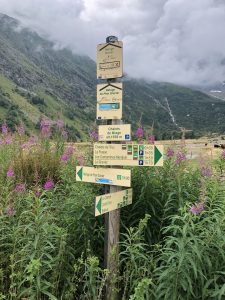
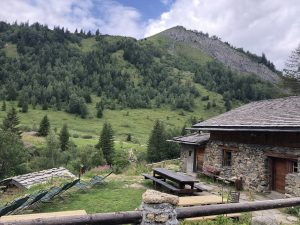
The first day of hiking we opted to take the more difficult route, a long 10.3 mile hike with an elevation incline of almost 5,000 feet to the pass, followed by a 4,300 foot decline to Les Contamines, France. This route offered up-close views of the world of glacier, the chance to cross a suspension bridge as well as the Col de Tricot (a 2,000m mountain pass) and brought us to the only inhabited area along the route, the Refuge de Miage where we were able to enjoy a local beer and take a much needed rest. Hiking through the Alps was like entering a beautiful painting of untouched nature where the only sounds that surround you are the chiming of the cowbells reminiscent of church bells in the wind. We ended our day walking through the quaint town of Les Contamines, France, with its beautiful church, Notre Dame, before arriving at our hotel where we enjoyed the pool to cool off and relax. We once again stopped for a baguette and cheese at a boulangerie (French for bakery) and a bottle of the local wine at the grocer.


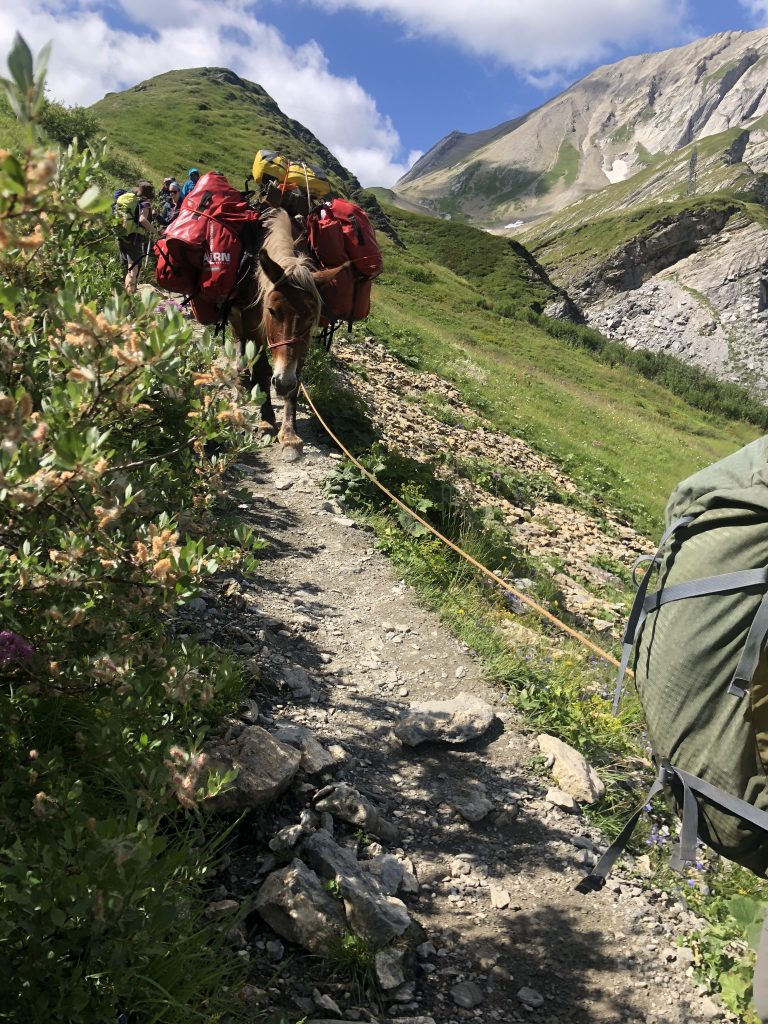
From Les Contamines we ventured up an old Roman Road, through pastures, over mountain passes, alongside Chamois and Marmots to arrive at the Refuge De Mottets. This was to be our most rustic lodging site located on the mountainside surrounded by snowcapped peaks melting into river valleys.

Refuges are located all along the hiking trail, 5-10 miles apart and provide hikers with a place to eat, drink and rest. The majority of folks staying at the refuge stay in large open rooms with cots and 20-40 other hikers, but our group upgraded so we could have private rooms with a sink and shower.
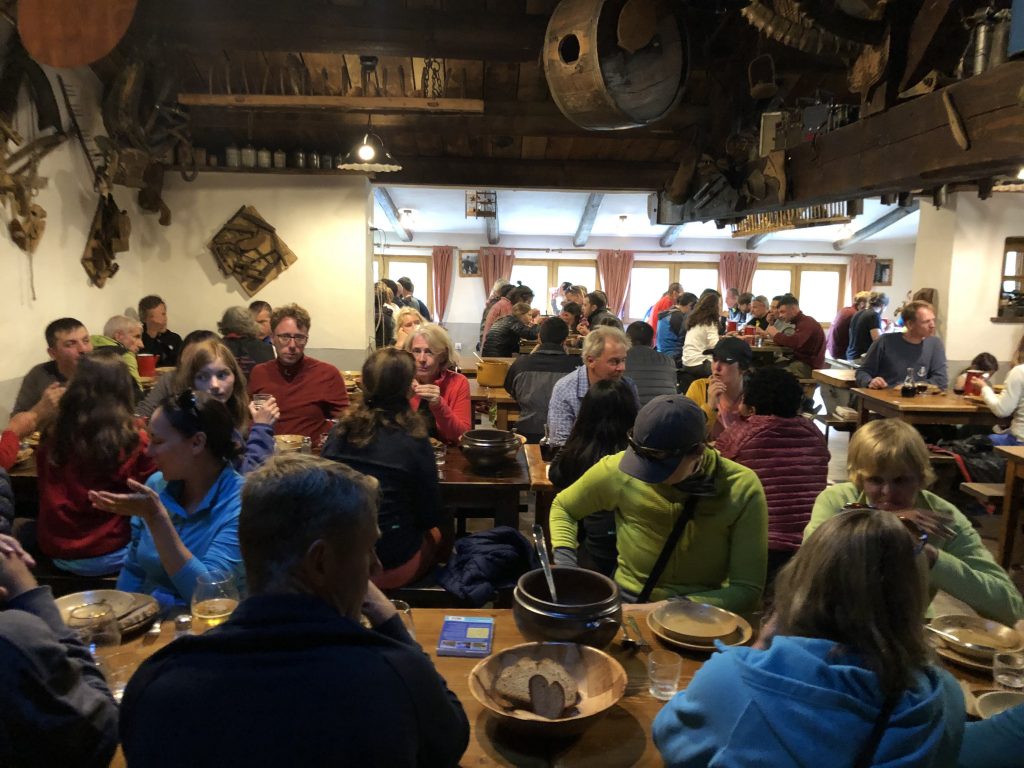
Either way the atmosphere is electric with travelers sharing stories, relaxing and enjoying the views. Most refuges have no wifi and often get their electricity from solar. The dining hall has long tables where guests eat family style and get to know others sharing their journey. At the end of the evening you can head out into the dark, quiet night and enjoy millions of stars above without them being drowned out by lights of a town.

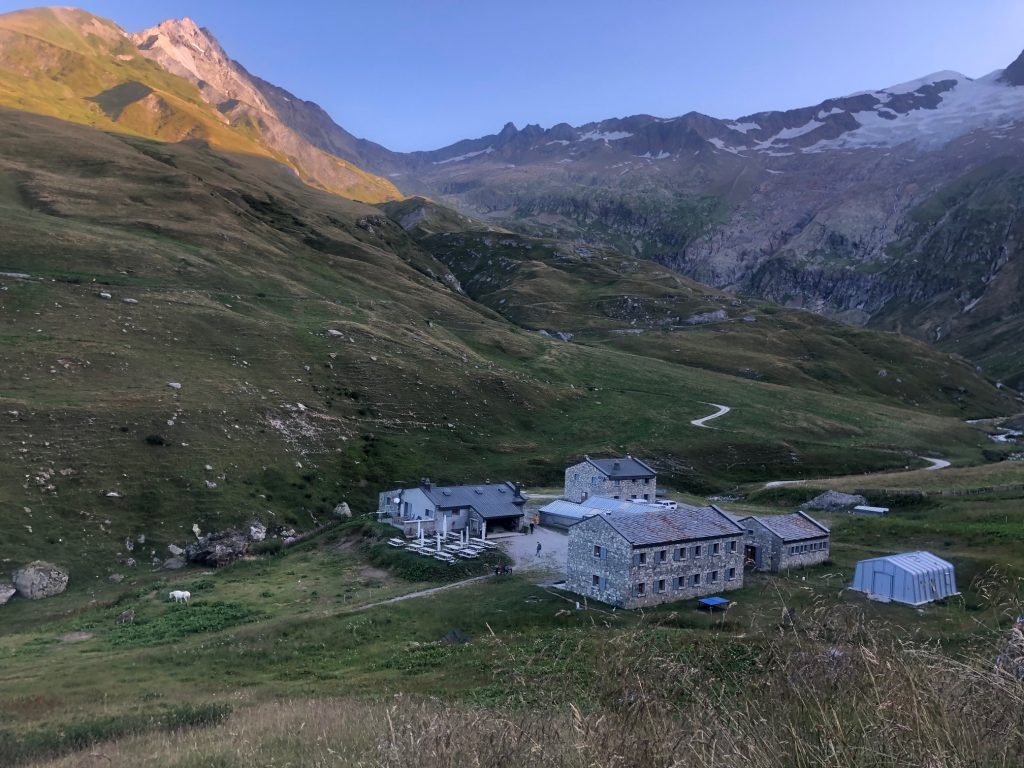
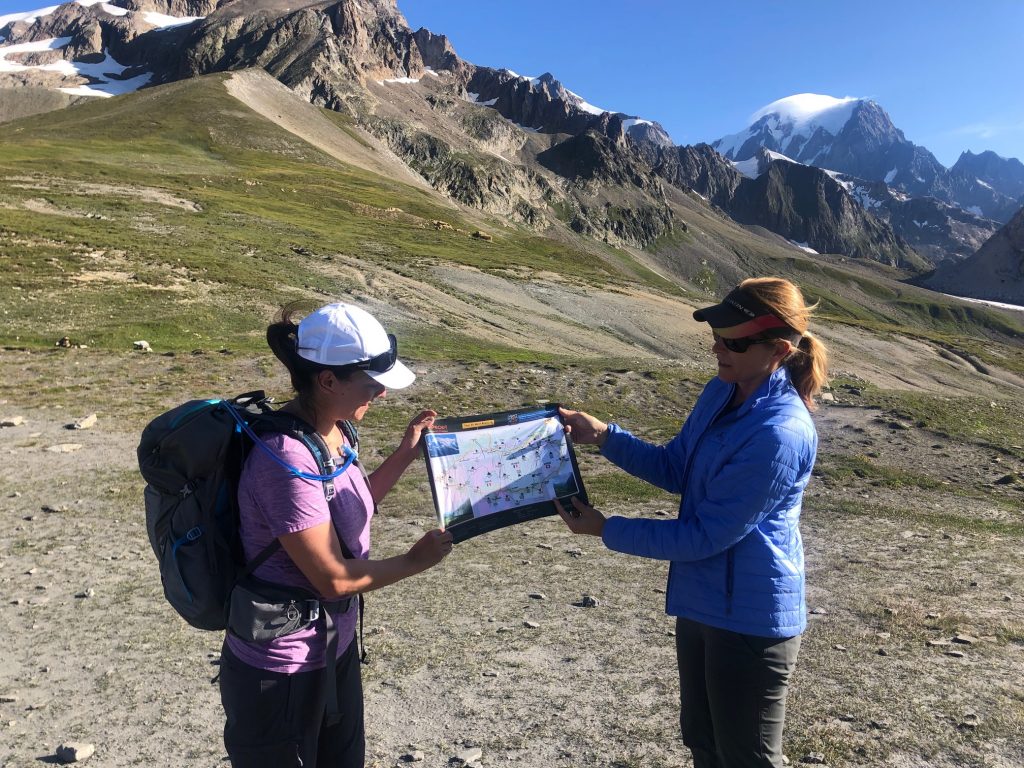
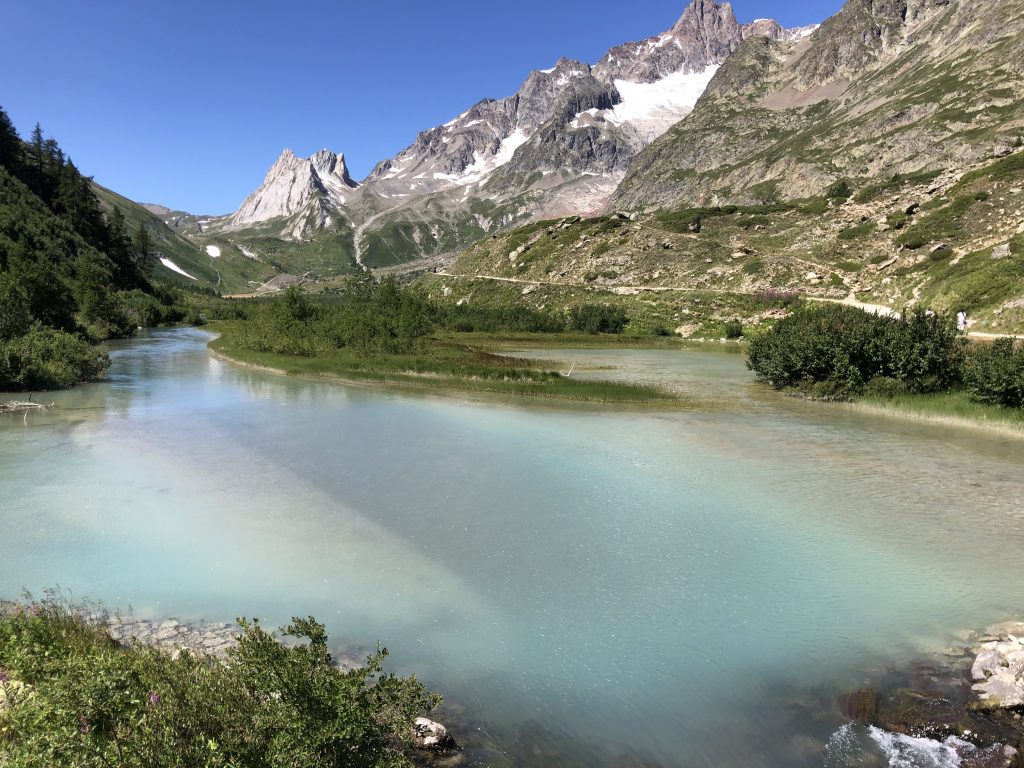
One of the challenges of hiking the Tour du Mont Blanc is the multi-day long distance hikes, and rising each morning to fuel for the day. You are up with the sun and climbing the next peak as the journey continues. After the leaving the Refuge de Mottets we ascended to the Cold de le Seigne which marks the border between France and Italy on our way to Courmayeur, a beautiful Italian village with wonderful food and friendly people. Sadly the “Best Of” tour only has one night in Italy and the next morning we took a bus to the head of a trail that would lead us to Champex Lac, Switzerland.
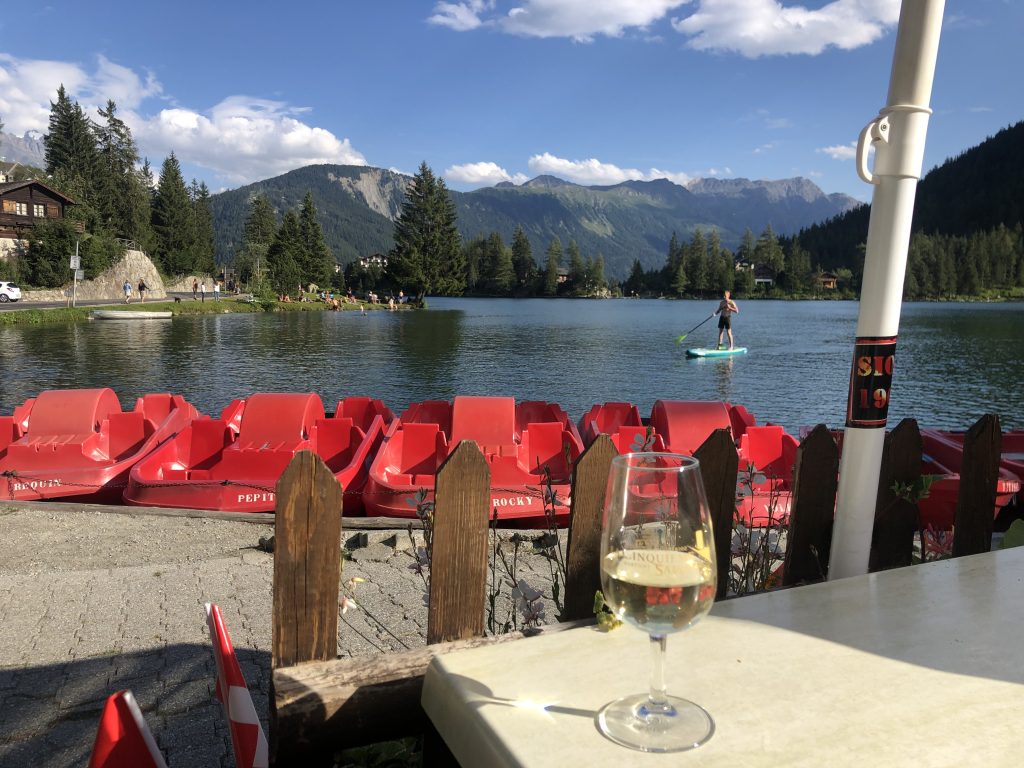
Champex Lac is a beautiful, small village situated on a clear alpine lake surrounded by mountains. After a long day of hiking, taking a swim in the cool water is a must and then you can follow that up with a glass of wine at the lakeside cafe. While in Switzerland, we took the opportunity to try the cheese fondue, which was amazing when you dip the locally fresh-baked bread. Early the next morning we had to make a decision as to whether to take the high trail across the Fenetre de Arpette (the highest point reached on the Tour du Mont Blanc and a little more treacherous and technical path), or the low trail through pastures that offers beautiful views of Rhone Valley.
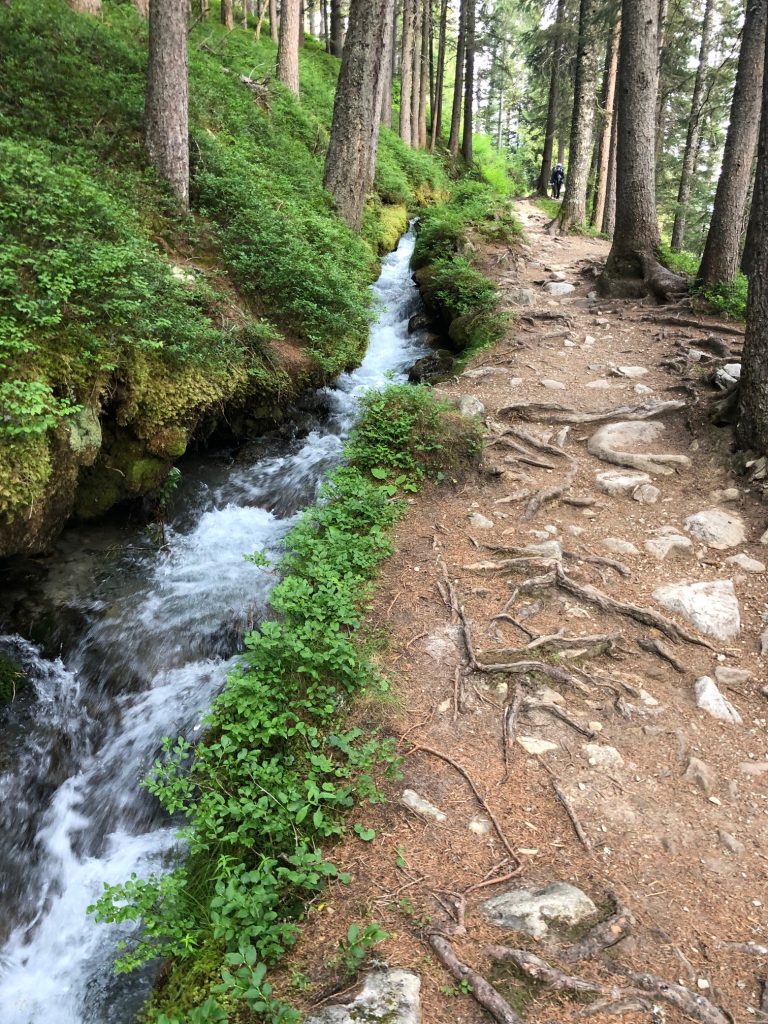
We opted for the more difficult challenge which offered a steep climb through a forest and across steams, through snow and scrambling up boulders. The most difficult part of the climb was the extremely steep descent that looks daunting but is manageable. On this path you feel as though you can reach out and touch glaciers, and at the peak you feel on top of the world. After the descent you follow a valley to Trient, Switzerland. Honestly, of all the towns, Trient is the least impressive, but we enjoyed putting our feet in the river that runs through the town and resting for the last day of our journey.
The final day of hiking was expected to be the easiest because of the alternative options we planned to use (a chair lift for the descent and a bus back to Chamonix). It was the shortest distance at just over 6 miles, and by using the chair lift we cut off the difficult descent. Unfortunately, we did not expect the turn in the weather and that made this one of our most challenging days of hiking and gave us all a greater appreciation for how nature could affect our experience. We had a little rain at the beginning of our trek, but the majority of the hike we experienced beautiful weather and had no need for all our rain gear, gloves, hats and jackets. On our last day we used it all and wished we had more gear to keep us warm. The rain turned to hail at the top of the peak and the wind was gusting. The winds were too high for the chairlift to run so we were looking at adding a significant distance to our trail. We took a break at the refuge to warm up before starting our descent. Thankfully, as we approached the chairlift the winds eased and we were able to take it down. The only thing blocking our path was a herd of Bulls that were grazing. Nothing was going to keep us from the chairlift so we slowly made our way through the bulls (avoiding eye contact) and made it back to Chamonix.
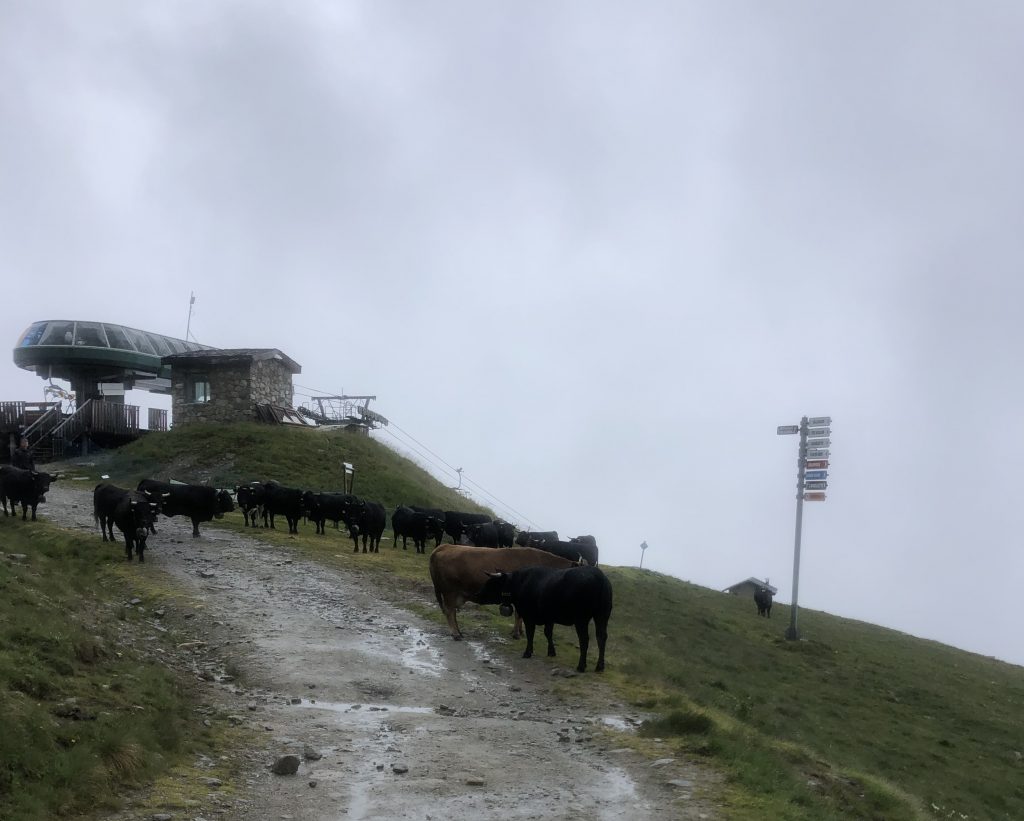
The entire experience was amazing and I highly recommend this trip for anyone who loves nature and the outdoors, hiking and different cultures and cuisine along the way.




